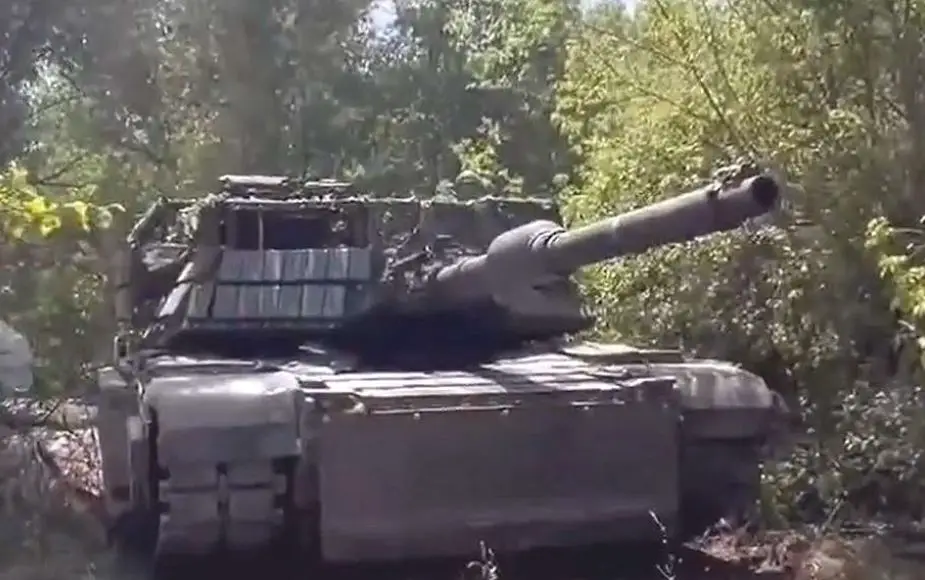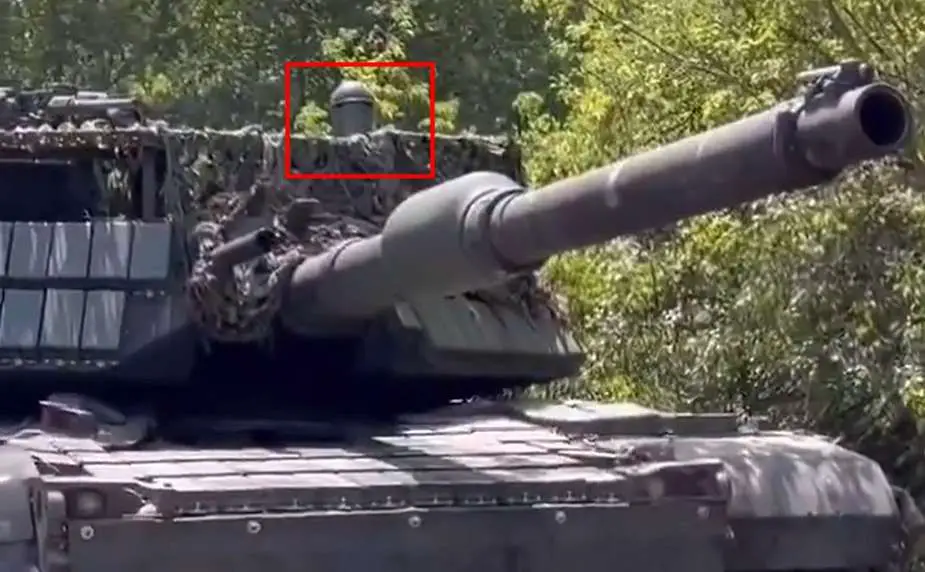Breaking News
Ukrainian Soldiers Enhance US M1A1 Abrams Tanks with Advanced Armor and Anti-Drone Solutions.
In a recent video published on Telegram, Ukrainian soldiers showcased their innovative upgrades to the American-donated M1A1 Abrams Main Battle Tanks. The footage reveals a comprehensive armor package meticulously mounted around the hull and turret, significantly enhancing the tank's defensive capabilities. Notably, the video also highlights what appears to be a counter-drone electronic warfare solution strategically placed on the roof of the turret, aimed at neutralizing modern battlefield threats.
Follow Army Recognition on Google News at this link

In the picture, you can see a U.S.-donated M1A1 Abrams tank to Ukraine fitted with a new explosive reactive armor package around the turret and hull, as well as a counter-drone electronic warfare solution (Picture source: Telegram)
On July 10, 2024, Army Recognition reported on the experiences of Ukrainian soldiers, who expressed concerns about the U.S.-donated M1A1 Abrams tanks' insufficient armor against contemporary threats such as drones. This vulnerability has been seen as a critical issue, as it inadequately protects personnel from evolving attack methods.
In response, Ukrainian soldiers have rapidly fortified the M1A1 Abrams tanks, demonstrating remarkable ingenuity and adaptability. The upgraded tanks now boast enhanced armor to counter threats from drones, anti-tank rockets, and missiles. This swift and effective modification underscores the soldiers' resourcefulness in addressing the new challenges of modern warfare.
A detailed analysis of this upgraded version of the M1A1 Abrams tank reveals several key enhancements. The turret is now encased with Explosive Reactive Armor (ERA) and additional armor plates mounted on the turret roof. This setup, notably, does not include the large wire cage armor, which can compromise the tank's combat capabilities. Additionally, the tanks are equipped with a counter-drone electronic warfare solution designed to jam the communication signals of enemy drones, further fortifying their defenses.
Explosive Reactive Armor (ERA) offers significant advantages over traditional tank armor by providing active defense mechanisms that mitigate the impact of anti-tank munitions. Traditional armor relies solely on thickness and material composition to absorb and deflect incoming projectiles. In contrast, ERA consists of explosive-filled tiles that detonate upon impact, disrupting the penetration process of shaped charge warheads and kinetic energy penetrators. This not only reduces the effective penetration depth of the incoming round but also disperses the energy, offering enhanced protection without significantly increasing the tank's weight. This active defensive capability makes ERA particularly effective against modern threats such as tandem warheads and advanced anti-tank guided missiles.
These modifications reflect a proactive approach by Ukrainian soldiers to adapt to the rapidly changing dynamics of the battlefield. By upgrading the M1A1 Abrams tanks, they have significantly bolstered their defensive measures, ensuring better protection for personnel and maintaining combat effectiveness in the face of evolving threats.

It seems that the Ukrainian M1A1 Abrams tank is also fitted with a counter-drone electronic warfare solution mounted on the turret. (Picture source Telegram)
New Threats for Tanks in Ukraine
The Ukrainian battlefield has become a proving ground for the latest anti-tank weaponry and tactics, with emerging threats significantly challenging traditional armored vehicles. Foremost among these threats are First-Person View (FPV) drones, loitering munitions, and next-generation anti-tank rockets and missiles.
FPV drones, equipped with high-resolution cameras and operated remotely, allow operators to guide them with precision towards their targets, often striking tanks at their most vulnerable points. These drones can carry explosive payloads, making them a formidable threat that can evade traditional defenses and deliver pinpoint attacks on tanks from above.
Loitering munitions, also known as "kamikaze drones," are another significant threat. These systems can hover over the battlefield for extended periods before identifying and engaging targets. Once a target is locked, the munition dives onto it, delivering a lethal payload. This capability allows for dynamic and adaptive targeting, making tanks susceptible to attacks even when stationary or concealed.
Additionally, the latest generation of anti-tank rockets and missiles pose severe threats to armored vehicles. These weapons are designed to strike the top of tanks, where armor is typically weakest. Their advanced guidance systems ensure high accuracy, and their tandem warheads can penetrate even the most robust armor defenses.
These evolving threats underscore the necessity for continuous innovation in tank defense systems. The combination of advanced FPV drones, loitering munitions, and sophisticated anti-tank missiles presents a complex and multifaceted challenge that requires integrated and adaptive countermeasures. Ukrainian soldiers' efforts to upgrade the M1A1 Abrams tanks are a critical step in addressing these threats, ensuring better protection and operational effectiveness on the modern battlefield.


























